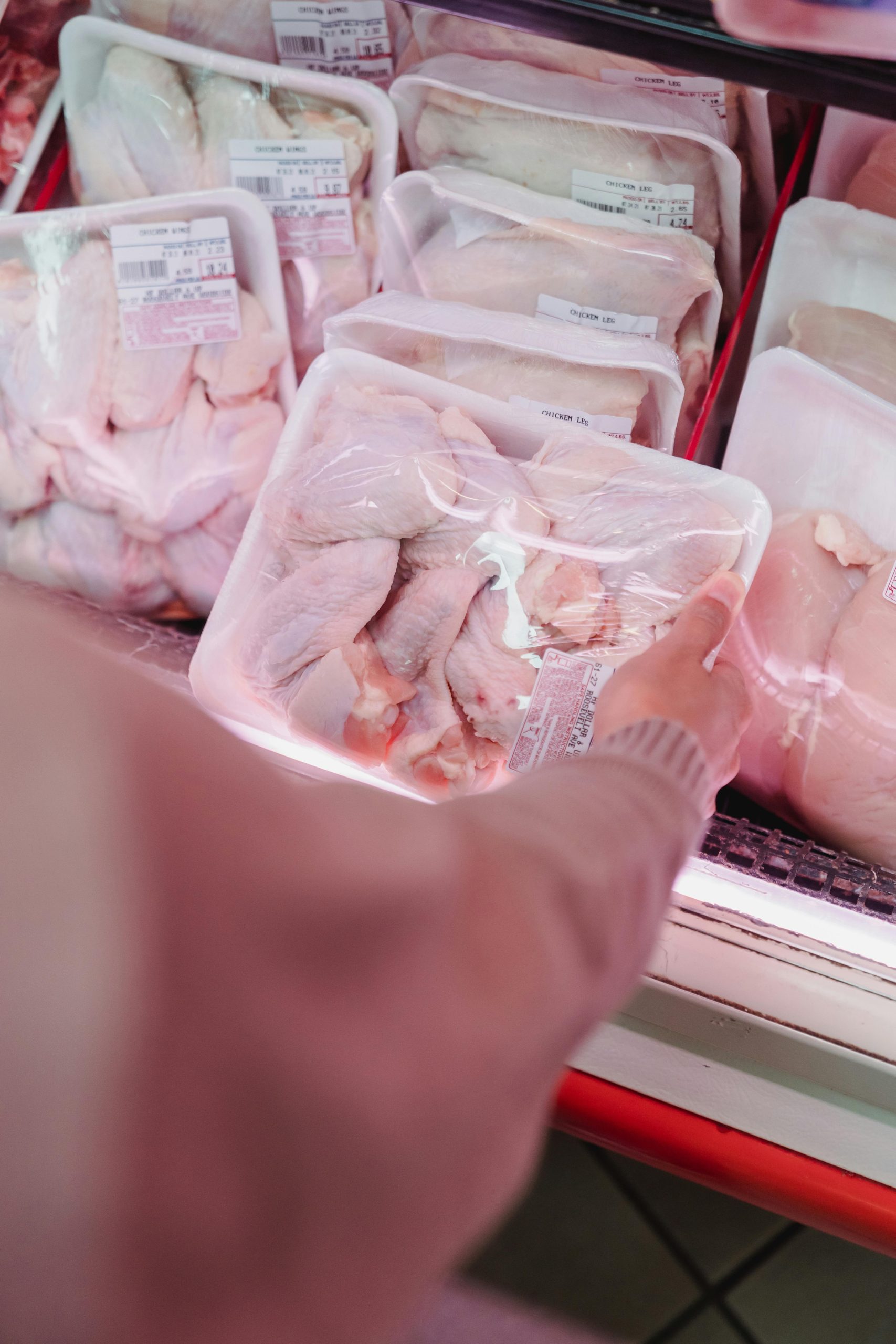Walking through the brightly lit meat section of a typical grocery store, consumers are presented with neatly packaged cuts of beef, pork, and poultry, often attractively displayed. While convenient and seemingly wholesome, the truth about the meat involves practices and conditions related to its production, processing, and labeling that many shoppers might find unsettling if they knew the full story. From the farm to the final package, certain aspects of modern industrial meat production raise significant ethical, environmental, and potential health concerns that often remain hidden from view.

Image Source: Pexels
1. Routine Non-Therapeutic Antibiotic Use
In conventional large-scale animal agriculture, antibiotics are administered routinely to entire herds or flocks through feed or water. This isn’t just for treating sick animals; it’s often used preemptively to prevent diseases common in overcrowded conditions. This widespread, often non-therapeutic use of antibiotics is a major contributor to the development of antibiotic-resistant bacteria. It is a critical public health threat that can impact humans when resistant strains spread.
2. Use of Artificial Growth Hormones (Primarily Beef)
To accelerate weight gain and increase overall meat yield per animal, cattle raised conventionally in the United States are often administered synthetic growth hormones, typically via implants placed under the skin. While the Food and Drug Administration (FDA) regulates and deems these hormones safe at approved levels based on residue studies, concerns persist among some consumer groups and scientists regarding the potential long-term health effects of consuming meat with hormone residues and the broader ecological impact of these substances entering the environment through animal waste.
3. Industrial Farming Conditions & Animal Welfare
The overwhelming majority of meat found in typical US supermarkets originates from animals raised within industrial factory farm systems. These operations frequently involve confining thousands of animals—be it cattle in feedlots, pigs in gestation crates or crowded pens, or chickens in massive barns—in extremely high-density conditions. Such environments often severely restrict natural behaviors, provide limited space for movement, may have poor air quality due to waste accumulation, and can lead to high levels of stress, injury, and disease among the animals, raising significant ethical questions about animal welfare standards.
4. Potential for Contaminants and Pathogens
The high-stress, overcrowded, and often unsanitary conditions prevalent in CAFOs can create environments where diseases spread more easily among animals. This increases the potential for harmful bacteria like E. coli, Salmonella, Campylobacter, or Listeria to proliferate. While slaughterhouses operate under inspection regulations designed to ensure food safety, the sheer scale of industrial processing means that contamination can occur. This leads to periodic recalls and ongoing public health risks associated with consuming undercooked or improperly handled conventional meat products.
5. Carbon Monoxide Gas in Packaging for Color

Image Source: Pexels
To maintain a bright, cherry-red appearance that consumers associate with freshness, some meat packers utilize an FDA-approved packaging process involving a modified atmosphere that includes a small percentage of carbon monoxide gas. This gas binds to the meat pigment myoglobin, preventing it from turning brown even as the meat ages naturally. While considered safe for consumption, critics argue this practice can be deceptive. It potentially masks the true age or declining quality of the meat by artificially preserving its color long past its peak.
6. Misleading or Vague Labeling Terms
Labels on meat packaging can often be confusing or less informative than they appear. For instance, the common USDA-regulated term “Natural” simply means the product contains no artificial ingredients or added colors and was minimally processed after slaughter. Crucially, it says nothing about whether the animal received antibiotics or growth hormones, what it was fed, or how it was raised. Similarly, terms like “Farm-Raised” can apply to animals kept entirely within industrial confinement buildings.
7. Lack of Transparency Regarding Origin and Processing
Tracing the exact origin of conventional meat can be challenging for consumers. Country of Origin Labeling (COOL) regulations have faced complexities and modifications. These regulations sometimes limit the information available on final retail packages for certain cuts. Furthermore, practices like using “meat glue” (transglutaminase) to bind smaller scraps into larger-looking cuts, or mechanically tenderizing steaks, are not always clearly disclosed. This reduces transparency about the product’s journey and composition.
Seeking Alternatives and Informed Choices
The convenience and affordability of conventional supermarket meat often conceal complex issues related to industrial agricultural practices. There are plenty of truths about the meat in supermarkets. Concerns include routine antibiotic and hormone use, animal welfare standards, and potential food safety risks. Those troubled by these aspects of the conventional meat industry can seek alternatives. They can do so by looking for specific, verifiable third-party certifications or by purchasing directly from local, smaller-scale farmers. They offer greater transparency about their raising and processing methods.
Read More
Why I No Longer Buy Meat From the Grocery Store (And What I Do Instead)
6 Signs of Lower-Quality Lunch Meat to Avoid at the Grocery Store


